I love fishing with really good anglers — anglers who possess those innate fly fishing traits that, while they can be taught, come more naturally to some than to others. It’s fun to watch a really good angler with a butter-smooth cast unleash a haymaker across the river. It’s enjoyable to watch someone with a lot of experience in the salt not only put the cast on the money, but then spend the next half hour battling a big tarpon to the boat.
For me, a man of ever-developing angling skills despite my passion for the craft, fly fishing with a better angler offers a chance to become a better angler. You’ve likely heard in the sports and business worlds that it’s important to find someone who “floats all boats” — someone who is in possession of so much talent that he or she makes those around them better.
That’s the person I want to fish with. And you should want to fish with them, too.
Too often, we get caught up in the competitive spirit. And, sure, the “first fish, biggest fish, most fish” game we’ve all played during a fishing outing can be a lot of fun, especially if it’s good-natured and nobody takes it too seriously. But, instead of the pressure that comes with the competition, consider pairing up with an angler who’s been there and done that a few times before and couldn’t give a damn about who catches the first bonefish, the biggest trout or the most pike.
If you have the means — and none of your buddies are markedly better fly fishers than you are — spring for a guided trip now and then. I’ve never, ever, come home from a guided fishing trip without having picked up at least a few simple nuggets of angling wisdom. First, you’ll be fishing with a pro — someone who is paid to help you cast to and catch more fish. Second, you’ll fish with someone who knows the water, knows the subtleties of the fishery and, most importantly, knows where the fish are going to be at any given time. These are obvious benefits to fishing with someone who knows more than you do. But it’s more than that.
It’s probably been close to 20 years since I wandered into the Appalachian backcountry with a buddy of mine from Virginia. We hiked down into a little-known blue line on the map off the Blue Ridge Parkway in search of native brook trout. My friend knew this area well. Me? Not so much. But I was eager to latch into brookies where they belonged, and I was happy to “go to school” off the wisdom of my friend.
So, following his lead, we plucked trout after trout from impossibly clear plunge pools and from slow, deep runs. All on dry flies. And, generally, all within a rod’s length of where we stood. The little brookies were voracious — it was an excellent day.
And then we came upon a big tail-out, where the creek rounded a bluff and then opened up into a long, fairly deep run with modest structure. After a day of literally flipping little Stimulators over pocket water, this new feature in the creek was completely different than anything we’d seen. But my friend, who’d fished the creek dozens of times, knew exactly how to approach this new challenge.
He hopped back up on the creekside trail and we hiked a good 300 yards downstream to where the run tumbled over a modest cataract and the pocket-water fishing resumed. I watched as he slowly stepped into the creek and started casting upstream to a submerged boulder — it was the only structure I could see in the deep run, and, from where he was standing, it was a good 60 feet away.
Armed with little 3-weight rods for these diminutive wild fish, we weren’t really in the “long cast” game. Literally, every fish we caught that morning, until we got to that run, was caught using subtle flips, bow-and-arrow casts and tight roll casts. The cover along the creek was so tight that any backcast we dared to make was destined to get tangled in the redbuds and dogwoods.
But, here, with room to open things up a bit, my buddy started to stretch some fly line. And I noticed something I’d never considered before as he uncorked a 60-foot cast and put the fly just above the midstream boulder. As his forward cast unfolded, and he came to that 10 o’clock stop in his motion, the line continued forward. Just as the fly passed by his head, he tilted his shoulder, dropped the rod and pointed the tip right at the boulder.
The result? A pile of line at his feet that he’d never stretched tight on his backcast zipped through the guides and added a good 10 feet to his cast.
I remember asking, “What is this necromancy?”
“It’s a saltwater thing,” he said. “I learned it striper fishing.”
No, he didn’t double haul. But he did figure out a way, in tight quarters, how to reduce the friction between the rod guides and the fly line. And, seconds later, he hooked the biggest brookie of the day, a 13-inch kype-jawed buck that I’ll never forget.
And, of course, I’ll never forget that little trick — that shoulder tilt that allowed my friend to use the line’s forward momentum to get a few extra feet out of his cast. I use that cast today, and I use it a lot.
A few years before that, while fishing the Rio Grande outside of South Fork, Colo., (maybe the best little town in Colorado that still feels like Colorado), I was fishing with a buddy of mine who’s also a former guide. It was maybe half an hour before sunset — that magic hour where sunlight filters through the cottonwoods and you can see everything that’s happening. As we waded upstream, casting to rising trout during an epic PMD hatch, my guide friend grabbed my shoulder and pointed. There, about a 100 feet upstream, a trouty nose the size of a fist emerged from the river and sucked in a hapless mayfly caught in the surface film.
“Stop,” my friend said. And he just kept looking at the spot where the fish rose. It was a modest stretch of pocket water, tucked in behind an almost-submerged rock, not five feet from a streamside willow that hung over the river to give the trout just the right amount of cover so that it could confidently dine without having to worry about an opportunistic osprey or eagle.
The fish rose again. My friend kept his hand on my shoulder.
“Don’t move yet,” he said. “Let's make sure we can get to it when the time is right.”
One more rise. That’s all my friend needed. He took a couple of careful steps upriver, and I followed along, happy to be standing at this guy’s elbow. Instinctively, I began to peel fly line off my reel, thinking that I’d need to make a pretty long cast to put my PMD pattern over the rising trout. My friend put his hand on my shoulder again.
“No,” he said. “We need to get closer.”
And he was right. The light was on our side, and the trout was very likely facing upstream, away from us. We slowly walked a few steps at a time, and the trout continued to rise at a pretty regular clip. Soon, we were within 40 feet of the rising fish, and it continued to rise.
“Now?” I asked.
“Not yet,” he said. “When you can move your feet, you should move your feet. Your chances are better if your cast is shorter.”
And, he whispered, the chances are also better at a firm hook-set with a shorter cast and less line between the angler and the trout.
We got to within about 30 feet of the trout, and my friend kind of took stock in the surroundings. Nothing behind us to catch an errant backcast. Yes, the cast might require a short reach to get around the overhang. But I think he figured I had what it took to put the fly where it needed to be.
“If you had 10 chances to make that cast, how many times could you hit that pocket?” he asked.
The question caught me off guard. I’d never considered something as simple as probability. I thought about it for a second, and opted for utter honesty.
“Maybe six,” I said.
“Good enough,” he said. “Go get it.”
A few minutes later, we released a gorgeous 18-inch wild brown that sipped in the fly on the second drift.
“You caught that fish because you moved your feet.”
Good tip, right? Could I have caught the fish from 40 feet? From 50 feet? Maybe. But drawing upon my newfound appreciation of fly-fishing probability, my chances would have been significantly less, I’d wager.
The lesson? Find somebody better than you. Watch them. Learn from them. Then, one day, somebody’s going to ask to go fishing with you, and maybe you can pass on a little nugget of wisdom.
Maybe you’ll be the better angler.




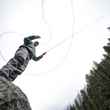
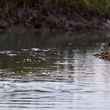
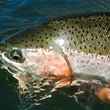







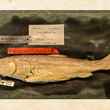
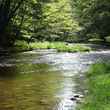



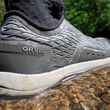
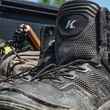




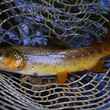



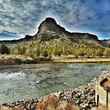

Comments
Glenn Dotter replied on Permalink
Good article and good advice. You dont need to pay someone to teach you necessarily. Find a buddy and watch and learn. I've been throwing flies for 60+years, and have been blessed to have had 3 great teachers. For the past 40 years, I have spent time just sittin on the bank and watching my best friend who is probably the best dry fly fisherman I have seen or known. He says the same about me when it comes to nymphing and swinging wets. Its one of the things that makes flyfishing special.
Again, great article.
Pages